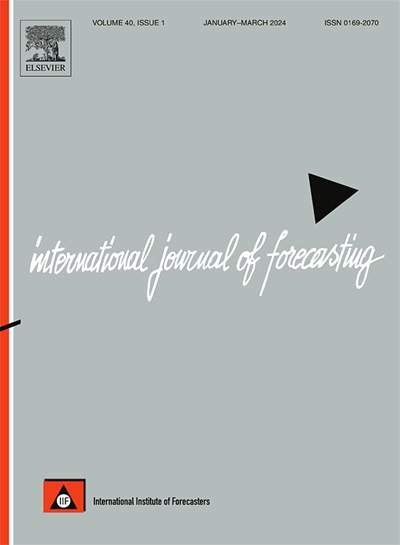经济的不确定性能实时预测实际活动吗?
IF 7.1
2区 经济学
Q1 ECONOMICS
引用次数: 0
摘要
我们对世界大型企业联合会的同步经济指数及其组成部分(工业生产、就业、个人收入、制造业和贸易销售)进行了实时样本外预测,评估了15种经济不确定性措施的预测能力。结果表明,这些措施对左尾的分位数具有(实时)预测能力。因为不确定性度量都是未观察实体的代理,所以我们使用主成分分析来组合它们的信息。不确定性指标的很大一部分差异可以用两个因素来解释:总体经济不确定性因素略微偏向金融状况,以及消费者/媒体信心指数在衰退后仍处于高位。与具有单个不确定性度量的模型相比,使用带有一组不确定性度量的因素的预测回归模型可以获得更一致的收益。此外,尽管使用国家金融状况指数(NFCI)可以获得准确的预测,但不确定性因素模型在预测就业时效果更好,总体而言,不确定性因素具有与NFCI互补的预测内容。本文章由计算机程序翻译,如有差异,请以英文原文为准。
Does economic uncertainty predict real activity in real time?
We assess the predictive ability of 15 economic uncertainty measures in a real-time out-of-sample forecasting exercise for The Conference Board’s coincident economic index and its components (industrial production, employment, personal income, and manufacturing and trade sales). The results show that the measures hold (real-time) predictive power for quantiles in the left tail. Because uncertainty measures are all proxies of an unobserved entity, we combine their information using principal component analysis. A large fraction of the variance of the uncertainty measures can be explained by two factors: a general economic uncertainty factor with a slight tilt toward financial conditions, and a consumer/media confidence index which remains elevated after recessions. Using a predictive regression model with the factors from the set of uncertainty measures yields more consistent gains compared to a model with an individual uncertainty measure. Further, although accurate forecasts are obtained using the National Financial Conditions Index (NFCI), the uncertainty factor models are better when forecasting employment, and in general, the uncertainty factors have predictive content that is complementary to the NFCI.
求助全文
通过发布文献求助,成功后即可免费获取论文全文。
去求助
来源期刊

International Journal of Forecasting
Multiple-
CiteScore
17.10
自引率
11.40%
发文量
189
审稿时长
77 days
期刊介绍:
The International Journal of Forecasting is a leading journal in its field that publishes high quality refereed papers. It aims to bridge the gap between theory and practice, making forecasting useful and relevant for decision and policy makers. The journal places strong emphasis on empirical studies, evaluation activities, implementation research, and improving the practice of forecasting. It welcomes various points of view and encourages debate to find solutions to field-related problems. The journal is the official publication of the International Institute of Forecasters (IIF) and is indexed in Sociological Abstracts, Journal of Economic Literature, Statistical Theory and Method Abstracts, INSPEC, Current Contents, UMI Data Courier, RePEc, Academic Journal Guide, CIS, IAOR, and Social Sciences Citation Index.
 求助内容:
求助内容: 应助结果提醒方式:
应助结果提醒方式:


